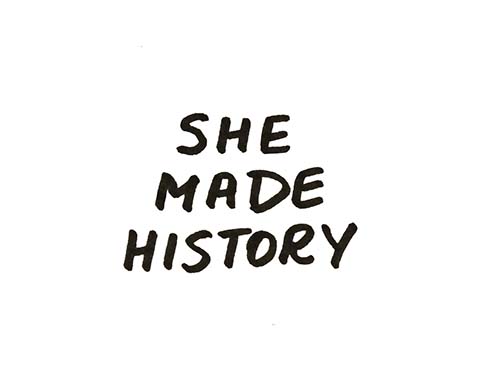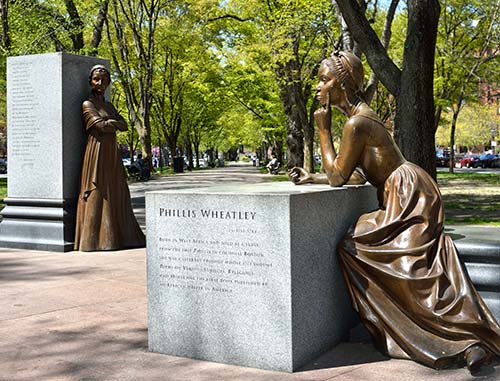Women who Stand Out by Standing Up

March 22, 2021
In this blog–my last segment dedicated to women during Women’s History Month—I wanted to focus on mothers who made the world stronger, equitable and more just. Some of these names will be familiar, some not. Each fought in different ways to advance justice and equity.
In 1826, Sojourner Truth (circa 1797—1883) and her baby daughter escaped slavery in Ulster County, New York. Soon after her escape, she heard that her five-year-old son, Peter, was illegally sold to a man in Alabama. Truth raised money for a lawyer, filed a complaint in court, and successfully got Peter out of slavery—a landmark case. Truth went on to become a Christian preacher in New York City and toured the Northeast, speaking about the Bible, abolition, and women’s suffrage.
Candy Lightner delighted in her twin daughters. In 1980, a hit-and-run drunk driver killed her daughter Cari. The driver had had three prior convictions for drunk driving and had been arrested two days prior for a hit-and-run. Lightner’s pain became the force behind her founding of Mothers Against Drunk Driving (MADD). Through its work to raise awareness and get tougher legislation passed, MADD has helped save hundreds of thousands of lives.
Alberta Williams King was the mother of three children. She was also very active in women’s rights, the NAACP, and the YWCA. She raised her children to have self-respect and taught them that the segregation they experienced was “a social condition and not a natural order.” Her son, Martin Luther King Jr. said of his mother “she made it clear to me every day that I must never allow the Jim Crow world to make me feel inferior. She taught me to stand tall.” In 1974, six years after Dr King was assassinated, Alberta King was shot and killed at her organ in Ebenezer Baptist Church.
Waris Dirie was a victim of female genital mutilation at the age of five. At 13, when her parents arranged for her to marry a man in his sixties, she ran away from home. Dirie went on to be a successful model, retiring to found an organization called Desert Flower that combats female genital mutilation around the world. As the mother of four children, she told Harper’s Bazaar that female genital mutilation isn’t just a women’s issue: “Every education begins with Mama. We have to rethink what we teach our sons. That’s the most important thing.”
Mary Harris Jones, who later became known as “Mother Jones,” faced tremendous sorrow in her life. In 1867, she lost her husband and four young children to yellow fever. After months of a depression so deep in her soul she could not move, she knew if she did not do something, she would die. She moved to Chicago and opened a dress shop—which promptly burned to the ground in the Great Chicago Fire of 1871. It was during this period she became aware of the horrendous labor conditions—especially for children. She channeled her pain and frustration to organizing union strikes and fighting against child labor. Mother Jones was sentenced to prison several times and was denounced on the floor of the US Senate as the “grandmother of all agitators.” Her response: “I hope to live long enough to be the great-grandmother of all agitators.”
Debby Elnatan is a mom of three sons. Her second son, Rotem, was born with spastic quadriplegic cerebral palsy. Medical experts warned Elnatan that he shouldn’t crawl or walk, as it might worsen his muscle spasms. Elnatan was devastated as she saw what sitting motionless was doing to her toddler. Against doctor’s orders, she began helping her son stand up and move. This was good for Rotem but tough on his mother physically. After a few fits and starts, she developed a device to help them both. Rotem wore a harness with straps attached to a belt that went around Elnatan’s waist and kept him standing upright. They wore sandals attached to one another, so if Elnatan took a step, Rotem did, too. Rotem continued to gain strength and could now kick a ball with his father and brother. When Elnatan felt Rotem’s feet pushing to take steps, she knew he was walking. She partnered with a manufacturer and the result was Upsee™. From the moment the Upsee was marketed on the Internet, thousands of orders poured in from parents worldwide, eager to help their children experience life to the fullest.
22 Marzo 2021
Mujeres que Se Destacan, Manteniéndose en Pie
En este “blog”, que es el último de mis segmentos dedicado a las mujeres durante – el Mes Internacional de la Mujer — quería centrarme en las madres que hicieron el mundo más fuerte, más equitativo y más justo. Algunos de estos nombres te serán conocidos, otros no. Cada una luchó de diferentes maneras para promover la justicia y la equidad.
En 1826, Sojourner Truth (cerca 1797-1883) y su hija escaparon de la esclavitud en el condado de Ulster, Nueva York. Poco después de su fuga, se enteró de que su hijo de solo cinco años, Peter, fue vendido ilegalmente a un hombre en Alabama. Truth recaudó dinero para un abogado, presentó una queja en la corte y logró sacar a Peter de la esclavitudl; un caso histórico. Truth se convirtió en predicadora cristiana en la ciudad de Nueva York y recorrió la Costa Este, hablando sobre la Biblia, la abolición y el sufragio femenino.
Candy Lightner se deleitaba con sus hijas gemelas. En 1980, un conductor ebrio atropelló y mató a su hija Cari. El conductor había tenido tres condenas previas por conducir ebrio y había sido arrestado dos días antes por atropello. El dolor de Lightner, se convirtió en la fuerza que la llevó a la fundación de su Mothers Against Drunk Driving (MADD). A través del trabajo de la organización, creando conciencia y lograr que se aprobara una legislación más dura; la fundación MADD ha ayudado a salvar cientos de miles de vidas.
Alberta Williams King era madre de tres hijos. También fue muy activa en los derechos de las mujeres, la fundación NAACP y la fundación YWCA. Crió a sus hijos para que se respetaran a sí mismos y les enseñó que la segregación que experimentaban era “una condición social y no un orden natural. ” Su hijo, Martin Luther King Jr. dijo de su madre “ella me dejó claro todos los días que nunca debía permitir que el mundo de Jim Crow me hiciera sentir inferior. Ella me enseñó a mantenerme firme.” En 1974, seis años después de que el Dr. King fuera asesinado, Alberta King fue asesinada a tiros cuando estaba sentada a su órgano en la Iglesia Bautista Ebenezer.
Waris Dirie fue víctima de la mutilación genital femenina a la edad de cinco años. A los 13años, cuando sus padres le organizaron un matrimonio arreglado, con un hombre de unos sesenta años; huyó de su casa. Dirie, pasó a ser una modelo exitosa, retirándose después, para fundar una organización llamada Desert Flower; la cual combate la mutilación genital femenina en todo el mundo. Como madre de cuatro hijos, le dijo a Harper’s Bazaar que la mutilación genital femenina no era sólo un problema de mujeres: “la educación de cada uno comienza con mamá. Tenemos que reflexionar en lo que les enseñamos a nuestros hijos. Eso es lo más importante.”
Mary Harris Jones, quién más tarde sería conocida como “Mother Jones”; se enfrentó a una tremenda tristeza en su vida. En 1867, perdió a su marido y a sus cuatro hijos pequeños de fiebre amarilla. Después de meses de una depresión tan profunda en su corazón, que no le permitía moverse, sabía que si no hacía algo, moriría. Se mudó a Chicago y abrió una tienda de ropa, que rápidamente se incendió hasta los cimientos, en el Great Chicago Fire de 1871. Fue durante este período que se dio cuenta de las horrendas condiciones laborales, especialmente para los niños. Canalizó su dolor y frustración, organizando huelgas sindicales y luchas contra el trabajo infantil. Mother Jones fue condenada a prisión varias veces y fue denunciada en el recinto del Senado estadounidense como: la “abuela de todos los agitadores”. Su respuesta: “Espero vivir el tiempo suficiente para ser la bisabuela de todos los agitadores”.
Debby Elnatan es madre de tres hijos. Su segundo hijo, Rotem, nació con parálisis cerebral cuadripléjica espástica. Los médicos expertos le advirtieron a Elnatan que no él debería gatear o caminar, ya que eso podría empeorar sus espasmos musculares. Elnatan estaba devastada al ver que el estar sentado sin movimiento, le estaba haciendo a su hijo pequeño. Contra las órdenes del médico, comenzó a ayudar a su hijo a ponerse de pie y a moverse. Esto fue bueno para Rotem, pero difícil para su madre físicamente. Después de unos cuantos ajustes y comienzos; desarrolló un dispositivo que ayudaría a ambos. Rotem llevaba un arnés con correas atadas a un cinturón que iba alrededor de la cintura de Elnatan y que lo mantenía de pie. Llevaban sandalias atadas unas a otras, así que si Elnatan daba un paso, Rotem también. Rotem continuó ganando fuerza y ahora podía patear una pelota con su padre y hermano. Cuando Elnatan sentía que los pies de Rotem se esforzaban en dar un paso, ella sabía que estaba caminando. Se asoció con un fabricante y el resultado fue Upsee™. Desde el momento en que “Upsee” fue comercializado en Internet, miles de pedidos llegaron de padres de todo el mundo; ansiosos por ayudar a sus hijos a experimentar la vida al máximo.



